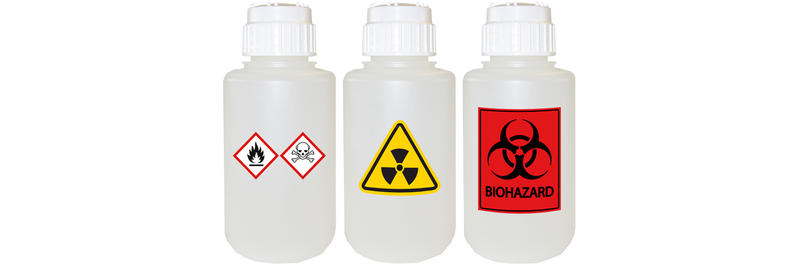The Greatest Guide To Reclaim Waste
Wiki Article
The 15-Second Trick For Reclaim Waste
Table of ContentsWhat Does Reclaim Waste Do?Some Known Facts About Reclaim Waste.A Biased View of Reclaim WasteReclaim Waste - The FactsThe Ultimate Guide To Reclaim Waste
Domestic sewage waste refers to the waste and products from a household septic tank. The appropriate management and disposal of residential sewage waste call for liquid waste to be moved to a sewer treatment plant where the proper techniques and devices are applied to purify and dispose of waste.
Industrial waste commonly consists of potential risks, such as flammable products or a mixture of fluid and solid waste products, and needs a much more advanced and detailed disposal process. The disposal of commercial waste generally involves the filtering of waste prior to transport to make sure risk-free and appropriate disposal. Industrial waste is developed from results and drainage of commercial procedures and production.
This kind of waste can not utilize the exact same sewer management transportation or processes as septic or business liquids. The hazardous waste administration procedure requires the evaluation and testing of liquid waste prior to it undertakes the disposal process (liquid waste disposal melbourne). Runoff waste is the fluid waste that originates from overflow and excess stormwater in extremely booming areas or cities
Runoff waste can create contamination and flooding if not managed appropriately. Making sure appropriate waste administration can avoid catastrophes and decrease ecological damage.
The Facts About Reclaim Waste Uncovered
Get in touch with PROS Services today to find out about our waste monitoring and disposal solutions and the appropriate ways to look after the liquid waste you generate.(https://disqus.com/by/reclaimwaste1/about/)This so-called 'wastewater' is not just an important source however, after treatment, will certainly be released to our land, rivers or the ocean. Used water from commodes, showers, bathrooms, kitchen area sinks, laundries and commercial procedures is recognized as wastewater.

water used to cool machinery or tidy plant and tools). Stormwater, a type of wastewater, is drainage that flows from agricultural and metropolitan areas such as roofing systems, parks, yards, roads, paths and gutters right into stormwater drains, after rain. Stormwater moves untreated straight to local creeks or rivers, ultimately getting to the ocean.
Reclaim Waste for Beginners
In Queensland, a lot of wastewater is dealt with at sewer therapy plants. Wastewater is delivered from residential or industrial sites through a system of sewers and pump terminals, recognized as sewerage reticulation, to a sewer therapy plant. Local federal governments build, preserve and Source run most sewage therapy plants. Operators are licensed under the Environmental Management Act 1994 to discharge cured wastewater at an appropriate ecological standard into rivers.The Division of Natural Resources advises regional federal governments concerning managing, operating and maintaining sewage systems and therapy plants. In unsewered locations, city governments might need owners to mount specific or family sewer treatment systems to treat residential wastewater from bathrooms, kitchen areas, shower rooms and washings. The Department of Natural Resources authorises using home systems when they are verified to be efficient.
Many stormwater receives no therapy. In some brand-new class, treatment of some stormwater to get rid of trash, sand and gravel has started making use of gross toxin traps. Wastewater therapy takes place in 4 stages: Gets rid of solid matter. Bigger solids, such as plastics and other objects incorrectly discharged to sewage systems, are eliminated when wastewater is gone through displays.
Wastewater then moves right into big storage tanks where solids work out and are eliminated as sludge. Grease and residue are skimmed from the surface. Uses tiny living organisms called micro-organisms to damage down and eliminate continuing to be dissolved wastes and great particles. Micro-organisms and wastes are integrated in the sludge. Removes nitrogen and phosphorus nutrients that could create algal blooms in our waterways and threaten marine life.
Get This Report about Reclaim Waste
Nutrient elimination is not readily available whatsoever sewage treatment plants because it requires pricey specialized tools. It is coming to be more common in Queensland. Clear liquid effluent created after therapy might still have disease-causing micro-organisms. If this effluent is released into waterways such as rivers or the sea, the micro-organisms will ultimately die out.
This usually means wastewater needs to be treated or contaminants removed prior to it can be released to waterways. A lot of wastewater flows into the sewage system. Under the Act, regional governments carry out authorizations and licences for environmentally relevant tasks (ERAs) involving wastewater releases that might have a regional impact. The division provides approvals and licences to Ages involving wastewater launches that may have a local or statewide impact.
Rumored Buzz on Reclaim Waste
Surveillance offers accurate info concerning water quality and can confirm that permit conditions are being met. The info obtained via tracking provides the basis for making water high quality choices.Report this wiki page